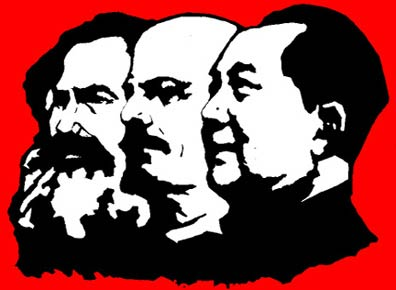
Econ Professor Bryan Caplan dissects Princeton Review’s take on Communism.
And while skimming the Princeton Review’s Cracking the AP Economics, bad textbook memories came flooding back to me. It’s mostly a normal econ text, but here’s what it tells us about communism:
Communism is a system designed to minimize imbalance in wealth via the collective ownership of property. Legislators from a single political party – the communist party – divide the available wealth for equal advantage among citizens. The problems with communism include a lack of incentives for extra effort, risk taking, and innovation. The critical role of the central government in allocating resources and setting production levels makes this system particularly vulnerable to corruption.
Is this passage really so awful? Yes. Let’s dissect it sentence-by-sentence.
Communism is a system designed to minimize imbalance in wealth via the collective ownership of property.
Communist regimes generally had low measured inequality, but collective ownership of property was never primarily a means of “minimizing wealth imbalance.” The official communist line was that collective ownership would lead to high economic growth – and ultimately cornucopia. And in practice, communist regimes made collective ownership an end in itself. Just look at their repeated farm collectivizations that caused horrifying famines in the short-run, and low agricultural productivity in the long-run. You wouldn’t keep doing this unless you valued collective ownership for its own sake.
Legislators from a single political party – the communist party – divide the available wealth for equal advantage among citizens.
What actually happened under communism was rather different. Communist regimes began with mass murder of their political enemies, businessmen, and their families. Next, they seized the peasants’ land, leading to hellish famines. In time, they launched major “industrialization” campaigns, but obsessively focused on building up their militaries, not mass consumption. And no communist regime has ever tried to “divide wealth for equal advantage.” Bloodbaths aside, communist regimes always put Party members’ comfort above the very lives of ordinary citizens.
The problems with communism include a lack of incentives for extra effort, risk taking, and innovation.
Communist regimes did provide poor incentives to produce consumer goods for ordinary citizens. But they provided solid to excellent incentives in the sectors they really cared about: the military, secret police, border guarding, athletics, space programs, and so on.
The critical role of the central government in allocating resources and setting production levels makes this system particularly vulnerable to corruption.
Talk about praising with faint damnation. Never mind mass murder, famine, pathological militarism, and state-mandated favoritism for Party members. What’s really telling is that communism was “particularly vulnerable to corruption.”
A defender of Cracking the AP Economics could protest, “It’s talking about the idea of communism, not the practice of Communism.” But re-read the passage. There’s nothing in the idea of communism that makes it “vulnerable to corruption.” This is clearly a complaint about how communism really worked – and it leaves students with the impression that corruption was communism’s chief defect.
A more reasonable response would be, “This passage is terrible, but unrepresentative. I dare you to find five similarly credulous evaluations of communism in other textbooks.” I strongly suspect I can meet this challenge; plenty of textbook authors, past and present, were probably communist dupes. But for now, I’m too busy to meet this challenge.